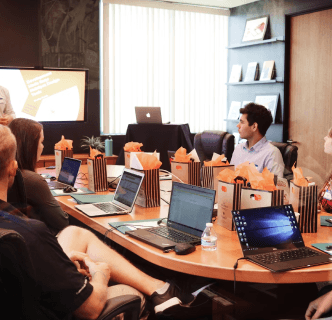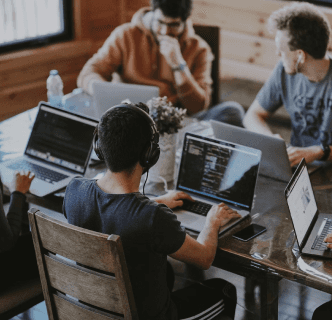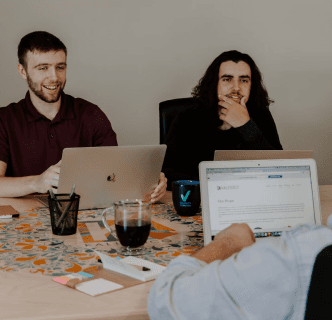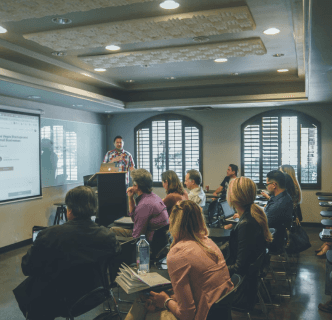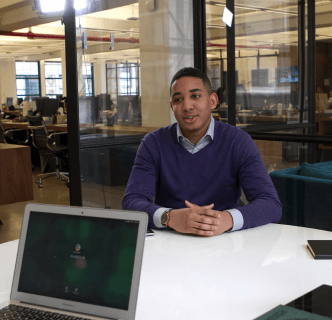
Key HR Trends for 2025: An Analytical Overview
Nov 17, 2025
10
The field of human resources is undergoing a fundamental transformation. As companies increasingly rely on automation, AI solutions, and efficiency, HR's role is evolving from an administrative function to a strategic driver of business success. This overview outlines the key HR trends for 2025, providing practical insights for organizations aiming to build future-ready workforces.
1. The Shift from Jobs to Skills
Organizations are moving away from traditional job titles and focusing on the specific skills employees possess. This skills-based approach allows for greater agility and precision in talent management. According to the Society for Human Resource Management (SHRM), eight out of ten companies report difficulty finding candidates with the necessary new skills.
Practical Implications:
To stay competitive, companies must build comprehensive skills maps to identify current capabilities and forecast future needs. Instead of relying solely on external hiring, the focus should shift to internal upskilling and reskilling programs.
Recommendation:
Integrate skills assessments into your recruitment and employee development processes. Create personalized learning roadmaps and track progress to build a resilient, adaptable workforce. This strategy reduces dependency on the external talent market and minimizes the risk of hiring mismatched candidates.
2. AI and Automation
Artificial intelligence is no longer an optional add-on; it is an essential component of modern HR infrastructure. Organizations leveraging AI are gaining a competitive edge through personalized employee experiences, automated routine tasks, and real-time analytics.
However, the integration of AI also introduces new challenges. Employees may feel anxious about job replacement, and there are valid concerns about algorithmic bias.
Practical Implications:
Effective AI implementation requires more than just technology. HR leaders must ensure transparency in how AI is used, provide training to help employees work alongside new systems, and guarantee that algorithms are fair and unbiased.
Recommendation:
Develop expertise in selecting and implementing HR technologies like screening platforms, chatbots, and skills development systems. The goal is to offer integrated solutions that enhance efficiency and improve the employee experience, rather than just providing standalone tools.
3. The Rise of Agile Organizations and Flexible Work
Flexibility is no longer just about remote versus in-office work. It now refers to an organization's ability to adapt quickly to market changes by reconfiguring teams, skills, and workflows. While remote and hybrid models remain important, the primary focus is on building agile structures and processes.
Practical Implications:
Companies should review their work policies to determine which roles can accommodate "micro-flexibility" (e.g., project-based assignments, flexible hours) and which require more structured arrangements. Contract work, freelancing, and other flexible employment models are becoming standard.
Recommendation:
Position your organization as a consultant on building flexible HR systems. This can include designing hybrid models tailored to specific business needs and advising on how to effectively manage a distributed and diverse workforce.
4. Total Rewards and Employee Value Proposition
Compensation is about more than just salary. A report from Aon indicates that employees are increasingly willing to trade a portion of their pay for better benefits and more favorable working conditions. This signals a need to move away from one-size-fits-all compensation packages.
Practical Implications:
Organizations should segment their workforce based on needs and preferences. Younger employees may value professional development opportunities, while working parents might prioritize flexible hours. Auditing your current rewards package and surveying employees can reveal what they truly value.
Recommendation:
Restructure your total rewards strategy to offer personalized packages. This approach can increase the perceived value of compensation without significantly increasing costs. Offering this as a service, especially for companies competing for talent in global markets, can be a strong competitive differentiator.
5. Talent Development, Learning, and Succession Planning
A McKinsey & Company report notes that few companies effectively align their talent development strategies with long-term business goals. The rapid pace of technological change demands robust plans for continuous learning, upskilling, and succession planning.
Practical Implications:
The need for new skills requires companies to invest in digital learning products, mentorship platforms, and systems that integrate training with career progression.
Recommendation:
Implement "micro-learning" modules that deliver information in short, digestible formats. Integrate learning management systems (LMS) with AI-driven recommendations to personalize development paths. Critically, establish metrics to measure the effectiveness of training programs and their impact on business outcomes.
6. A Focus on Employee Well-being and Human Skills
As AI handles more routine tasks, uniquely human skills like empathy, communication, and adaptability become more valuable. Leaders recognize these are the capabilities that AI cannot replace. Consequently, employee well-being—including mental health, work-life balance, and psychological safety—is now a top priority.
Practical Implications:
HR strategies must incorporate well-being initiatives as a core component. This involves not only implementing programs but also measuring their impact through employee surveys and fostering a culture that prioritizes psychological safety.
Recommendation:
Develop consulting services focused on implementing well-being programs. Help clients define and measure "human skills" as key performance indicators (KPIs) for their leadership teams, ensuring that people-centric values are embedded in the organizational culture.
7. HR as a Strategic Business Partner
According to AIHR, the role of the HR professional is shifting from an administrator to a strategic partner who drives business initiatives. This requires HR leaders to develop a deep understanding of business models, financial metrics, and competitive landscapes.
Practical Implications:
Strategically-minded HR departments and agencies will deliver greater value by participating in the formation of product strategy, organizational design, and future-proofing the workforce.
Recommendation:
Position your HR function or consultancy as a strategic integration partner, not just a service provider for recruitment and automation. This means contributing to high-level business decisions and aligning talent strategy with corporate objectives.
8. Generational and Gender Diversity
Demographic shifts are bringing new dynamics to the workforce. An AIHR report highlights the rapid growth of the "silver workforce" (older employees), requiring adjustments to HR policies. Simultaneously, gender equality remains a critical focus, as companies with strong female leadership consistently demonstrate better performance.
Practical Implications:
Organizations need to adapt career paths for different age groups, offer flexible work arrangements for senior employees, and implement programs to develop women leaders.
Recommendation:
Offer "diversity & age-inclusive HR" consulting as a core service. Creating an inclusive environment that leverages the strengths of a multi-generational and diverse workforce is a significant competitive advantage.
9. Managing Uncertainty with Organizational Agility
McKinsey research shows that workforce planning is often not strategic enough, failing to look beyond a three-year horizon. Companies must build systems that are resilient to external shocks, whether economic, technological, or geopolitical. This has led to the rise of the "antifragile" workforce—one that grows stronger under pressure.
Practical Implications:
HR must engage in scenario planning and stress-testing the organization's skills and structures. This involves creating HR roadmaps that account for different potential futures, such as economic downturns or disruptive technological shifts.
Recommendation:
Offer "future-proof workforce design" as a service. Guide clients in creating flexible and resilient organizational structures that are prepared to adapt and thrive in an unpredictable environment.
For HR consultancies and tech providers, the path forward is clear. Focus on delivering integrated solutions that address multiple trends simultaneously - such as combining skills mapping with AI-driven learning and flexible work models.
Develop a clear methodology that begins with diagnostics (assessing skills gaps, rewards packages, and technology), moves to strategy, and finishes with implementation. Create a productized service line that includes modules like "Skills Map & Upskilling," "AI-Powered HR Platform Implementation," and "Flexible Work & Distributed Talent Models." By adapting these global trends to specific market contexts, you can provide tangible value and help clients build organizations that are ready for the future.



